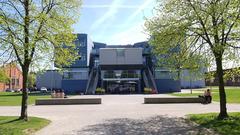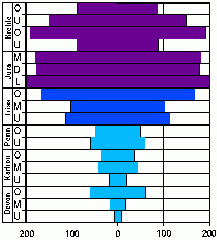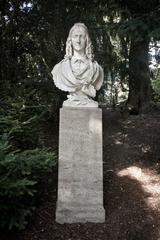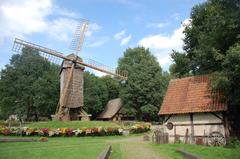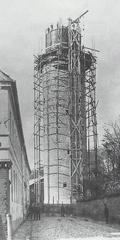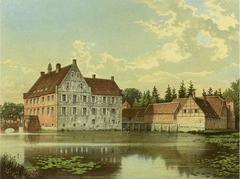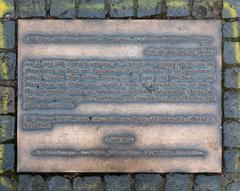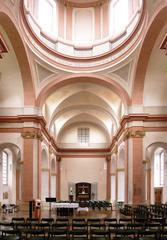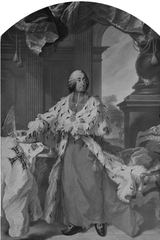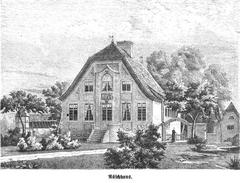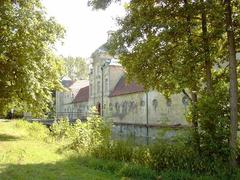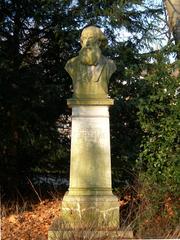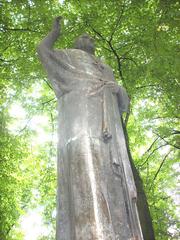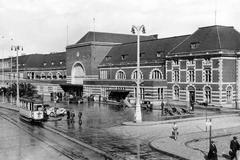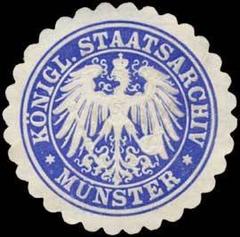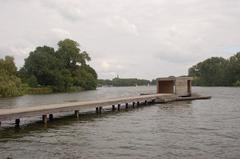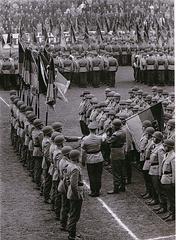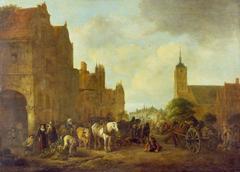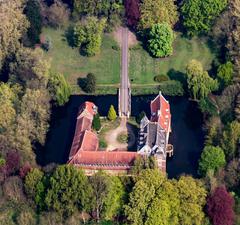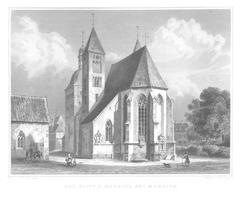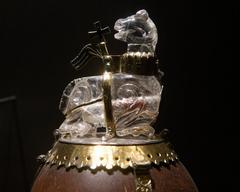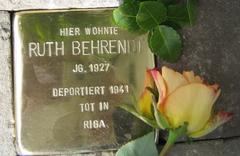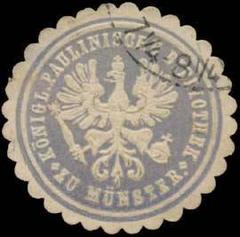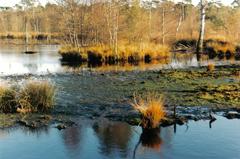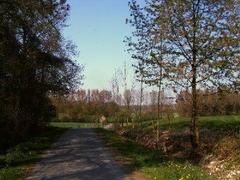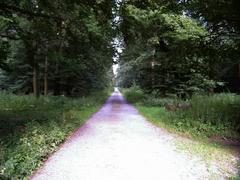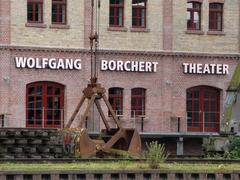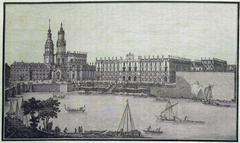St. Martini Münster: Visiting Hours, Tickets, and Historical Highlights
Date: 04/07/2025
Introduction
St. Martini Church in Münster is a prominent historical and architectural landmark, renowned for its blend of Romanesque origins, Gothic transformation, Baroque flourishes, and modern adaptations as Münster’s first official youth church. Its centuries-old presence in the heart of Münster’s old town makes it a focal point for visitors interested in religious history, cultural heritage, and vibrant community life. This comprehensive guide provides detailed information on visiting hours, ticket policies, accessibility, architectural highlights, and practical tips to help you make the most of your visit.
For the latest updates, consult the Stadt Münster tourism page and katholisch.de.
Table of Contents
- Historical Overview
- Architectural Highlights
- Contemporary Role and Community
- Visitor Information
- Nearby Attractions
- FAQ
- Plan Your Visit
- References and Further Reading
Historical Overview
Origins and Early Development
Founded in the late 12th century, St. Martini is one of Münster’s oldest Roman Catholic churches. It was established during a period of significant urban expansion and was designated as the parish for the city’s northeastern quarter (wiki.muenster.org). Early records show the church’s importance, with endowed prebends (benefices) confirmed in 1217 by Bishop Otto I, ensuring ongoing religious services (Wikipedia: St. Martini (Münster)).
Religious Transformations
Over the centuries, St. Martini has mirrored Münster’s shifting religious landscape:
- Reformation: In 1532, St. Martini briefly became a site of Protestant worship, reflecting the spread of the Reformation (wiki.muenster.org).
- Anabaptist Rebellion: During the radical Anabaptist rule (1534–1535), the church witnessed upheaval and subsequent Catholic restoration following the rebellion’s defeat (The Vintage News, German Girl in America).
- Post-Reformation: The church resumed its Catholic identity, symbolizing continuity and resilience despite religious strife.
Later History
St. Martini survived further challenges, including wars and secularization during the Napoleonic period, maintaining its role as a spiritual anchor through turbulent times (Wikipedia: St. Martini (Münster)).
Architectural Highlights
Exterior
- Romanesque Origins: The sturdy lower section of the west tower remains from the original 12th-century construction, showcasing characteristic rounded arches and solid masonry (Komoot).
- Baroque Tower Hood: Added in the 18th century, this onion-shaped dome is a rare feature in northern Germany and a visual highlight of Münster’s skyline (katholisch.de).
Interior
- Gothic Hall Church: In the late Middle Ages, the structure was transformed into a three-aisled hall church with nearly equal-height naves and a star-vaulted chancel from around 1380 (Stadt Münster: Martini-Kirche).
- Liturgical Furnishings: Highlights include an 18th-century silver candelabrum and the former altarpiece “Messe des Hl. Martinus” (now in the Stadtmuseum Münster).
- Organ and Bells: The church’s organ, built in 1959 and expanded in the 1990s, and its six bells contribute to Münster’s musical landscape (Wikipedia: St. Martini (Münster)).
Contemporary Role and Community
St. Martini now serves as Münster’s official youth church (Stadt Münster: Martini-Kirche), hosting youth-oriented liturgies, concerts, and events. Modern adaptations include flexible seating arrangements, making the space welcoming for young people and community activities (katholisch.de).
The church’s dynamic mission bridges tradition and innovation, positioning it as a hub for spiritual, cultural, and social engagement in Münster.
Visitor Information
Location and Getting There
- Address: Martinikirchhof 1, 48143 Münster, Germany
- Proximity: Steps from the Prinzipalmarkt, near St. Lamberti and St. Paul’s Cathedral, and adjacent to the Stadttheater.
- Public Transport: Münster Hauptbahnhof is a 15-minute walk or short bike ride away. Bike rentals are widely available (Germany Travel).
Visiting Hours
- General Opening: Daily, 9:00 AM to 6:00 PM (may vary on holidays or during events; check the official website for updates).
- Services & Events: Church services, concerts, and community gatherings are held regularly. Visitors are welcome but should be mindful of ongoing worship.
Tickets and Admission
- Entry: Free of charge; donations are encouraged for maintenance and programs.
- Guided Tours: Available by arrangement through the parish office or Münster’s tourist centers (Feiernwir). Advance booking is advised for groups.
Accessibility
- Wheelchair Access: Main entrance is ground level with ramps. Accessible restrooms are available.
- Families: The church is child-friendly; supervision is recommended for a quiet atmosphere.
Visitor Etiquette
- Dress modestly (shoulders and knees covered).
- Maintain quiet and respect worshippers.
- Photography is allowed for personal use, except during services or concerts; avoid flash or tripods unless permitted.
Nearby Attractions
- Prinzipalmarkt: Münster’s main square, lined with historic arcades and shops.
- St. Lamberti Church: Famous for its Gothic architecture and the Anabaptist cages (The Vintage News).
- St. Paul’s Cathedral: Münster’s grandest church, rich in history and art.
- Town Hall: Site of the Peace of Westphalia signing.
- Münster Theater and Picasso Museum: For cultural enrichment beyond ecclesiastical heritage (audiala.com).
FAQ
Q: What are the visiting hours for St. Martini Church?
A: Typically daily from 9:00 AM to 6:00 PM. Confirm via the official website before visiting.
Q: Is there an entrance fee?
A: No, entry is free. Donations are appreciated.
Q: Are guided tours available?
A: Yes, through the parish office or tourist centers. Advance booking is recommended, especially for groups.
Q: Is St. Martini accessible for visitors with disabilities?
A: Yes, with ramps and accessible restrooms.
Q: Can I take photographs inside the church?
A: Photography is permitted for personal use, except during services or unless otherwise indicated.
Q: Are there special events or concerts?
A: Yes, including religious festivals, youth events, and concerts. The feast of St. Martin (November 11) is a highlight.
Plan Your Visit
- Combine with other sites: Take advantage of St. Martini’s location by visiting the Prinzipalmarkt, St. Lamberti, and St. Paul’s Cathedral.
- Get maps or advice: Visit the Münster Information office at Heinrich-Brüning-Straße 7 or the branch in the Historic Town Hall (Stadt Münster Tourism).
- Stay sustainable: Use public transport or bicycles, refill water bottles at city stations (Refill Deutschland), and support local businesses.
- Stay informed: For the latest updates on hours and events, check the church’s website or contact [email protected].
References and Further Reading
- Stadt Münster: Martini-Kirche
- katholisch.de
- Feiernwir
- Komoot
- Wikipedia: St. Martini (Münster)
- wiki.muenster.org
- The Vintage News
- German Girl in America
- Germany Travel
- audiala.com
- visitsights.com
- Tourism on the Edge
- GPSmyCity
- Refill Deutschland
